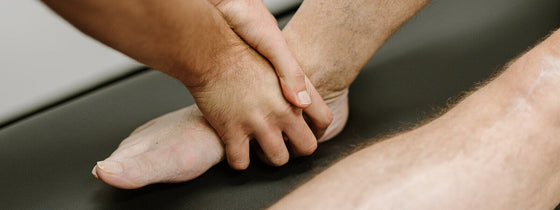Have you ever been told that your feet or ankles are unstable? What exactly does this mean? Unstable doesn’t sound good right? It paints the picture that with the slightest missed step your ankle or foot could blow out and your foot modelling career is over!
Stability is a word that gets thrown around all of the time but what it is really referring to, is your ability to control the movements of your foot/ankle complex and your capacity to respond to perturbations (aka wobbles, unsteady surfaces and/or complex sport moves).
During episodes of foot and ankle pain this ability to control is often diminished. You will find greater oscillations of the ankle and a decreased ability to modulate the natural movements of the foot.
A lot of the time people think they can put a band-aid on this by finding a more supportive shoe or orthotic – and this is something that can help in the short term in certain cases to offload the ankle and decrease some pain. But just putting your foot into a shiny new set of Asics Kayano’s doesn’t mean that the foot is going to function well!
Often this is not what the foot needs at all, but rather a targeted exercise program to improve the mobility, strength and adaptability of the foot/ankle to take load is the answer.
The missing part to the puzzle in an uncontrolled ankle or foot can actually be found nowhere near the foot at all. The glutes and muscles up around the pelvis are imperative to being able to control what happens further down the kinetic chain. If we do not have control from our proximal muscles and joints it makes it near on impossible to control what happens at the distal end of the segment.
Addressing these factors will allow you to run, jump, skip and hop your way through just about any activity that you want without the ongoing fear of that ankle giving way on you! Keen to get this addressed? Book in with any OHL Physiotherapist and we’ll help you create strong + springy + capable feet this side of winter!
If you wish to see any of our physiotherapists or our podiatrist contact us for an appointment!

If you're experiencing back or neck pain with neurological signs and symptoms, a thorough neurological examination is crucial for accurate assessment and effective treatment. In this Optimal Tip learn more about what we mean by completing a neurological exam!

Squats, deadlifts, and calf raises are key movement patterns that should be part of every strength and conditioning program—regardless of age and activity level. These functional movements support joint health, improve posture and balance, and reduce the risk of injury while building strength where it matters most.

A ganglion cyst is a fluid-filled swelling that typically forms over a joint or tendon sheath, causing discomfort and pain, especially when pressing against nerves or joints. Proper assessment and treatment, including physiotherapy, are essential for managing symptoms and improving function in the presence of a ganglion in your hand, foot, or wrist.